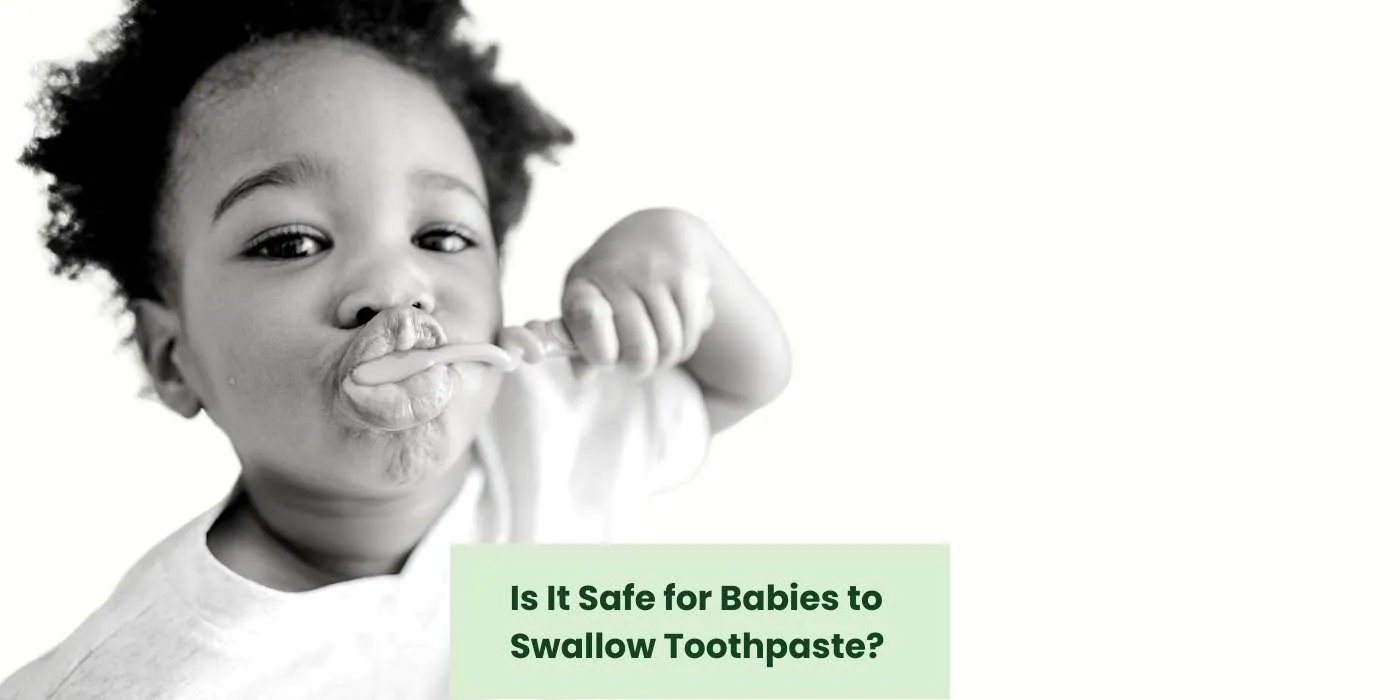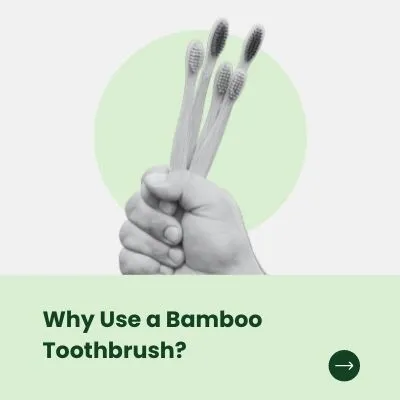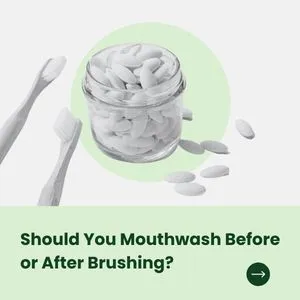When it comes to oral hygiene, parents have a lot of questions. One of the most common concerns is whether it is safe for babies to swallow toothpaste.
Using toothpaste for babies is important for maintaining their dental health, but it’s crucial to choose the right toothpaste and monitor the amount used.
Baby’s first dental visit is recommended by their first birthday or when their first tooth appears, and can help detect potential dental problems early.
In addition to brushing your baby’s teeth, there are other things you can do to maintain good dental health, such as avoiding sugary drinks and foods and cleaning their tongue.
Baby Toothpaste
Whether or not it is safe for babies to swallow toothpaste depends on the baby toothpaste in question as well as the quantity of toothpaste you are talking about.
While we all know that you shouldn’t swallow toothpaste, even if we can’t remember or were never told why, it can be hard to ensure that a baby or toddler doesn’t swallow at least a small amount of toothpaste while you are brushing their teeth.
The Importance of Using Toothpaste for Babies
Using toothpaste for babies is essential for maintaining their dental health. Toothpaste helps to remove plaque and bacteria, which can cause cavities and gum disease.
Even though baby teeth eventually fall out, it’s important to take care of them because they help your baby chew, speak, and hold space for permanent teeth.
Starting good dental hygiene habits early can help prevent dental problems in the future.
What to Look for in Toothpaste for Babies
When selecting toothpaste for your baby, there are a few things to consider. Firstly, make sure that the toothpaste is specifically designed for babies and that it contains a low amount of fluoride.
Fluoride is essential for preventing tooth decay, but too much can be harmful. It’s recommended to use toothpaste with no more than 1,000 parts per million (ppm) of fluoride for babies under three years old.
Choose a toothpaste that has a pleasant taste to encourage your baby to brush their teeth. Some toothpaste flavors like fruit or bubblegum can be appealing to babies.
Check that the toothpaste is safe to swallow, as it’s likely that your baby will swallow some toothpaste while brushing.
Why Shouldn’t You Swallow Toothpaste?
The main reason you shouldn’t swallow toothpaste is that most toothpaste contains fluoride. Fluoride is great for strengthening teeth and preventing cavities when used in small amounts. But it can cause a number of problems if larger quantities are ingested.
Problems from swallowing toothpaste with fluoride can include stomach upset, nausea and vomiting, as well as dental fluorosis which causes white spots or lines on the teeth and in some cases, can cause discolouration of the enamel.
How To Prevent Babies Swallowing Toothpaste
Realistically when babies are little there’s not much you can do to stop them from swallowing toothpaste other than telling them to spit and demonstrating how to do it. So in order to stop them from ingesting too much fluoride, you have two options.
Firstly you can choose a fluoride-free toothpaste that is safe to swallow and use this until they are old enough to understand about swallowing. Or secondly, you can ensure that up until the age of three they use only a tiny smear of toothpaste so that if they do end up swallowing a bit it won’t be enough to do them any harm.
It is also important to choose a toothpaste formulated for babies as these will contain less fluoride compared to a toothpaste formulated for older children or adults.
Another tip is to choose a mint flavoured toothpaste even when they are very small as opposed to a fruity flavoured one so there is less temptation for them to want to eat it. Choosing a mint toothpaste right from the start also makes the transition easier when they get older and suddenly strawberry or bubble gum flavour isn’t an option.
Toothpastes That Are Safe to Swallow
While fluoride has been shown to be good at preventing cavities so has good brushing and being mindful of how much sugar kids are having. If you are worried about the potential impact of your baby or toddler swallowing toothpaste due to the fluoride content then the best option might be to choose a baby toothpaste that doesn’t contain any fluoride at all.
There are plenty of toothpaste options available that remove plaque, get rid of bacteria and protect babies teeth and gums without using fluoride including natural toothpaste made by Green People and Jack n Jill.
How to Brush Your Baby’s Teeth Safely
When brushing your baby’s teeth, use a soft-bristled brush and a small amount of toothpaste (about the size of a grain of rice). Brush their teeth gently in circular motions and make sure to clean all surfaces of their teeth, including their gums and tongue.
You can also use a finger brush or a clean, damp cloth to clean their gums and teeth. As your baby grows, you can increase the amount of toothpaste to the size of a pea and teach them to spit out the toothpaste.
Tips for Maintaining Good Dental Health in Babies
In addition to using toothpaste and brushing your baby’s teeth, there are other things you can do to maintain good dental health in babies.
- Brush your baby’s teeth twice a day, once in the morning and once before bed.
- Avoid giving your baby sugary drinks or foods. Sugary drinks can cause tooth decay, and babies who are constantly exposed to sugar are more likely to develop dental problems.
- Encourage your baby to drink water after meals. This can help wash away any food particles and bacteria that can cause tooth decay.
- Begin flossing your baby’s teeth once they have two teeth that touch.
- Clean your baby’s tongue gently with a soft-bristled brush or a clean, damp cloth. Cleaning their tongue can help remove any bacteria that can cause bad breath or affect their dental health.
- Begin weaning your baby off the bottle at around 12 months of age to reduce the risk of baby bottle tooth decay.
Common Dental Problems That Can Affect Babies
There are several dental problems that can affect babies, including baby bottle tooth decay and teething. Baby bottle tooth decay occurs when sugary liquids, such as formula or juice, are left in a baby’s mouth for long periods of time.
To prevent this, don’t put your baby to bed with a bottle, and don’t give them sugary drinks throughout the day.
Teething can also be a challenging time for babies, as it can cause discomfort and pain. To help alleviate their discomfort, give them a cold teething ring or washcloth to chew on. You can also use a clean finger to gently massage their gums.
Choosing the Right Toothbrush for Your Baby
Choosing the right toothbrush for your baby is important for their dental health. There are several types of toothbrushes available for babies, including finger brushes, silicone brushes, and electric toothbrushes.
Finger brushes are a good option for younger babies who are just starting to teethe, as they can be used to massage their gums and clean their teeth.
Silicone brushes are a good option for older babies who are getting more teeth, as they can be used to clean teeth and gums.
Electric toothbrushes can be used for babies who are comfortable with them but make sure to choose a brush head that’s appropriate for their age.
Baby’s First Dental Visit
The American Academy of Pediatric Dentistry recommends that babies have their first dental visit by their first birthday or when their first tooth appears. This visit can help detect any potential dental problems early and provide guidance on how to care for your baby’s teeth.
Resources for Parents
If you have additional questions or concerns about your baby’s dental health, there are several resources available to you. The American Academy of Pediatric Dentistry website offers tips and advice on caring for your baby’s teeth and gums.
You can also ask your pediatrician or dentist for recommendations on toothpaste, toothbrushes, and other dental care products.
FAQs on safe to swallow toothpaste for toddlers
Is it safe for toddlers to swallow toothpaste?
Small amounts of toothpaste are generally safe for toddlers to swallow, but it’s important to monitor the amount used and ensure that they don’t swallow large amounts. Children under the age of three should use a toothpaste with no more than 1,000 parts per million (ppm) of fluoride.
What should I do if my toddler swallows too much toothpaste?
If your toddler swallows a large amount of toothpaste, contact your doctor or a poison control center immediately. Fluoride toxicity can cause symptoms such as stomach pain, vomiting, and diarrhea.
What are the benefits of fluoride in toothpaste?
Fluoride is essential for preventing tooth decay and strengthening tooth enamel. It can also help reverse early stages of tooth decay.
How much toothpaste should I use for my toddler?
For children under three years old, use a smear of toothpaste about the size of a grain of rice. For children between the ages of three and six, use a pea-sized amount of toothpaste.
Can I use adult toothpaste for my toddler?
Adult toothpaste is not recommended for young children, as it can contain higher levels of fluoride and other ingredients that may not be safe for children. Stick to using toothpaste specifically designed for children.
When should my toddler start using toothpaste?
Toddlers should start using toothpaste as soon as they have teeth. It’s recommended to brush their teeth twice a day, once in the morning and once before bed.
What should I do if my toddler doesn’t like the taste of toothpaste?
Try using a toothpaste with a different flavor or a toothpaste specifically designed for sensitive teeth. You can also try letting your toddler choose their own toothpaste to make brushing their teeth more enjoyable.
Can I use a fluoride-free toothpaste for my toddler?
Fluoride is essential for preventing tooth decay, so it’s recommended to use a toothpaste that contains fluoride. However, if you’re concerned about your toddler swallowing toothpaste, you can use a fluoride-free toothpaste in small amounts until they are comfortable spitting it out.










